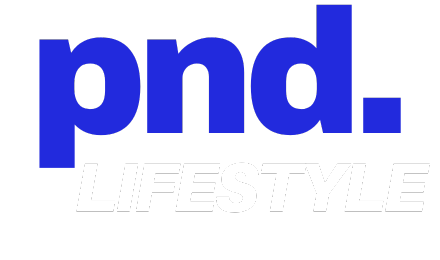Personal Finance Coaching: Make Extra Cash as a Side Hustle

Thinking about starting a side hustle that leverages your knack for managing money? Personal finance coaching could be your perfect gig. A financial coach helps individuals create budgets, save money, and set clear financial goals.
By guiding clients through tricky financial decisions, you can make a significant impact on their lives.

Many people struggle with budgeting and saving.
As a financial coach, you can provide advice that’s tailored to their specific needs.
Clients often seek out help to manage debt, save for retirement, or simply understand how to handle their finances better.
This side hustle not only provides you with extra income but also offers the satisfaction of making a real difference.
To get started, you don’t need to be an expert in investments or financial markets.
The focus is more on helping clients develop good financial habits and stick to their financial plans.
There are even certifications you can obtain to establish your credibility further.
It’s a fulfilling way to combine your financial smarts with your passion for helping others.
Key Takeaways
- Financial coaching is a side hustle that helps people manage money and set goals.
- You guide clients through budgeting, saving, and financial decision-making.
- Certification can boost your credibility and effectiveness as a coach.
Understanding Financial Coaching
Financial coaching helps individuals develop skills to manage their money more effectively.
It focuses on financial literacy and education, providing tools and guidance for better financial decisions.
What Is Financial Coaching?
Financial coaching is a personalized service aimed at improving your financial health.
Unlike financial advisors who handle investments, financial coaches focus on day-to-day money management.
They help you create budgets, set financial goals, and change spending habits.
You don’t need to be wealthy to benefit from financial coaching.
Coaches work with clients of all income levels, helping them build a strong financial foundation.
This is especially helpful if you struggle with budgeting or saving money.
Some coaches earn certification from organizations like the Association for Financial Counseling & Planning Education (AFCPE), which ensures they meet professional standards.
The Role of a Financial Coach
A financial coach acts as a mentor, providing ongoing support and accountability.
They help you identify financial goals, such as paying off debt or saving for a down payment on a house.
Coaches guide you in creating a detailed plan and stick with you through the process.
Unlike other financial professionals, coaches focus on behavioral finance.
They address the emotional aspects of money management, helping you overcome bad habits or financial stress.
Typically, financial coaching is done on a fee-only basis, meaning you pay a set fee for each session or a package of sessions.
This ensures the coach’s advice is unbiased and in your best interest.
Establishing Financial Goals

Setting financial goals is key to achieving financial success, especially when managing a side hustle.
This process involves identifying what you want to achieve and creating a plan to reach those objectives.
Identifying Your Financial Goals
The first step in establishing financial goals is to figure out what you want to achieve financially.
Start by thinking about both short-term and long-term goals.
Short-term goals could include saving for an emergency fund or paying off debt.
Long-term goals might involve saving for retirement or buying a home.
Write down these goals to make them more tangible.
Break them into categories like savings, debt repayment, and investments.
Knowing exactly what you’re aiming for helps you stay focused and motivated.
If your side hustle is a key part of your plan, decide how its earnings contribute to these financial goals.
Maybe you want to use side hustle income to build an emergency fund or pay off a loan.
Being clear about these connections helps keep your plan on track.
Setting Achievable Objectives
Once you know your financial goals, the next step is to set achievable objectives.
Break down each goal into smaller, manageable steps.
For instance, if your goal is to save $10,000 for a down payment on a house, determine how much you need to save monthly.
Make sure your objectives are SMART: Specific, Measurable, Achievable, Relevant, and Time-bound.
This approach ensures that each step is clear and doable.
Create a detailed action plan that outlines these steps.
Use a mix of lists or tables to organize your tasks.
Track your progress regularly to see how well you’re moving towards your goals and adjust your plan if needed.
Remember, your side hustle plays an important role.
Decide how much of your side income will be allocated to each financial goal, and keep monitoring its impact.
By following these steps, you can turn your financial ambitions into reality and take control of your financial future.
Creating a Winning Financial Plan
To create an effective financial plan for your side hustle, focus on setting a robust budget and establishing a secure emergency fund.
These will help you manage cash flow and handle any unexpected expenses.
Budgeting Towards Success
A strong budget is crucial for success.
Start by understanding your income and expenses.
List all sources of income from your side hustle, including client payments and any other funds.
Next, outline your expenses.
Consider anything related to your side hustle, such as software subscriptions, advertising costs, and materials.
Organize your budget to monitor where your money goes.
Create categories like housing, food, and business supplies.
This helps you identify areas to cut costs.
A budget isn’t just for tracking; it’s also for planning.
Allocate funds for business growth activities, like marketing or training.
This foresight ensures you have money set aside for important investments.
Regularly review your budget to adjust for any changes in income or expenses.
By staying on top of this, you ensure your financial plan stays relevant and effective.
Crafting an Emergency Fund
An emergency fund is a financial safety net.
It’s essential for covering unexpected expenses without disrupting your budget.
Aim to save at least three to six months’ worth of expenses.
Start small if needed.
Even a few dollars each week can build a robust fund over time.
This fund should be easily accessible but kept separate from your main spending accounts.
Consider setting up automatic transfers to move money into your emergency fund regularly.
This makes saving less of a hassle and ensures consistency.
This fund is crucial for maintaining peace of mind.
Unexpected expenses, like equipment repairs or sudden drops in income, won’t derail your business.
This stability allows you to focus on growing your side hustle effectively.
Money Management Mastery
Mastering money management involves understanding how to control your spending habits and managing your debt effectively.
These skills allow you to take control of your finances and work towards a more stable financial future.
Controlling Your Spending Habits
One of the first steps in improving your money management is controlling your spending habits.
Track where your money goes each month.
Identify areas where you might overspend.
You can use budgeting apps to monitor your expenses or go old-school with a simple spreadsheet.
Create a budget that outlines your income and expenses.
Stick to it as closely as possible.
Prioritize needs over wants.
Avoid impulse purchases.
If you see something you want, wait 24 hours before buying it.
Finding opportunities to save is essential.
Opt for generic brands, cook at home, and look for sales or discounts.
These small changes can add up over time.
Effective Debt Management
Dealing with debt is crucial for financial health.
Start by listing all your debts, including credit card debt, student loans, and personal loans.
Note the interest rates and minimum payments for each.
Focus on paying off high-interest debts first.
This will save you money on interest in the long run.
Consider the avalanche method (paying off debts with the highest interest rates first) or the snowball method (paying off the smallest debts first for quick wins).
Consolidating debts can also be useful.
You might be able to get a lower interest rate and simplify your payments.
Talk to a financial advisor to explore your options.
Avoid taking on new debt unless absolutely necessary.
As you pay down existing debt, your financial situation will become more manageable.
Investing in Your Future
Investing is a key way to grow your wealth and secure your financial future.
By understanding the basics of investing and building a solid investment portfolio, you can make informed decisions that align with your financial goals.
Basics of Investing
Investing involves putting your money into assets like stocks, bonds, or real estate in the hopes of generating a return.
One key point is to start early, as this allows your investments more time to grow. Compound interest is your best friend here, as it helps increase the value of your investments over time.
Start by educating yourself. Understand terms like “risk tolerance,” “diversification,” and “asset allocation.” These concepts help you make informed decisions.
If you’re unsure, seeking investment advice from a financial coach might be helpful.
Additionally, think about retirement planning.
Regularly contributing to a retirement account, like a 401(k) or an IRA, can be a great way for disciplined, long-term investing.
Employer-match programs make these options even more attractive.
Building Your Investment Portfolio
Creating a balanced investment portfolio involves diversifying your investments to manage risk. Diversification spreads your investments across different asset classes (like securities, real estate, and cash) to mitigate losses.
Assess your risk tolerance. This impacts your asset allocation.
For example, if you are more risk-averse, you might allocate more to bonds than stocks.
Regularly review and adjust your portfolio based on your financial goals and market conditions.
Avoid over-investing in any single asset.
Tools like robo-advisors can offer automated recommendations tailored to your goals.
Incorporate consistent investments into your finances.
You could set up automated contributions to your investment accounts.
Even as a side hustle, ensuring your investments are regularly funded can lead to substantial growth over time.
For more detailed guidance, you might consider professional services like a financial or money coach.
They can help create personalized strategies for your investment and retirement plans.
Navigating Financial Products
When dealing with personal finance, it’s vital to understand the ins and outs of financial products and how they can impact your financial health.
Choosing the right tools and understanding key concepts like rates and returns can aid in making smarter financial decisions.
Choosing the Right Financial Tools
There are many financial tools available that can help you manage your money effectively.
Whether you’re choosing a savings account, an investment platform, or budgeting software, it’s essential to pick tools that align with your financial goals.
Savings Accounts: High-yield savings accounts can offer better interest rates.
Look for accounts with low fees and easy access.
Investment Platforms: If you’re investing, seek platforms that provide a range of investment options, low fees, and good user support.
Budgeting Apps: These can help track spending, set goals, and save more efficiently.
Apps like Mint or YNAB (You Need A Budget) are popular choices.
Don’t forget to read reviews and seek recommendations from trusted sources to ensure you’re picking the best financial tools for your needs.
Understanding Rates and Returns
When selecting financial products, you need to understand rates and returns.
These metrics will help you evaluate the potential growth or cost associated with various financial tools.
Interest Rates: Know the annual percentage yield (APY) for savings options.
A higher APY means more savings over time.
Returns on Investments: For stocks, bonds, or other investments, examine historical returns.
While past performance isn’t a guarantee, it provides insights.
Loan Rates: If considering loans, focus on the annual percentage rate (APR).
A lower APR can save you money in the long run.
By understanding how rates and returns work, you’ll be better equipped to choose financial products that boost your financial well-being.
Carefully consider these aspects when navigating the financial landscape, particularly if you’re looking to optimize your side hustle income.
Fostering Healthy Financial Habits
Adopting healthy financial habits can transform your finances.
Achieving this involves behavior change, consistency, and discipline.
Behavior Change and Money
Changing your financial behavior means adopting practices that support your financial goals.
This can include creating a budget to track your income and expenses.
A key step is setting clear, achievable financial goals like saving for a down payment or paying off debt.
To make these changes stick, start small.
Maybe begin with saving a little each week.
A finance coach can help guide you through these changes by providing insights and strategies.
They might suggest using financial apps to monitor your spending habits.
Another important aspect is staying open-minded and willing to adjust your habits as needed.
Consistency and Discipline in Finances
Maintaining financial health requires consistency and discipline.
This means regularly reviewing and sticking to your budget.
Making it a habit to save a portion of your income each month can build a strong financial foundation.
Discipline also involves resisting unnecessary spending.
Regularly setting aside money for emergencies can prevent financial stress.
A finance coach can support you in establishing routines that promote financial stability.
Using tools and resources, such as budgeting apps or savings plans, can help you stay on track and meet your financial goals.
Financial Education and Resources
Gaining financial literacy can help you improve your money management skills and make informed decisions.
Discover useful online resources and local educational opportunities.
Leveraging Online Information
The internet is full of valuable resources for learning about personal finance.
Websites like Purposeful Finance offer guidance on managing money, budgeting, and dealing with debt.
Online courses from platforms like Coursera and Udemy can teach you important skills, such as investing and saving for retirement.
Social media is another powerful tool.
Following financial coaches and experts on Instagram or Twitter can provide you with tips, tricks, and updates.
You can join Facebook groups where people share advice on budgeting and saving.
Podcasts also offer useful insights while you’re on the go.
Local Education Opportunities
Community centers and local libraries often offer free or low-cost workshops on financial literacy.
These sessions can cover various topics, from basic budgeting to planning for college expenses.
Organizations like AFCPE also provide certification programs and support for financial coaches, which can be beneficial if you’re considering coaching as a side hustle.
Local colleges and universities sometimes have classes or seminars open to the public.
These can be excellent opportunities to learn from experts and network with like-minded individuals.
Don’t forget to check out local non-profits that might offer one-on-one financial counseling sessions.
Marketing Your Coaching Services

Boosting your personal finance coaching side hustle involves creating a strong personal brand and effective client acquisition strategies.
Here’s how to do it right.
Building a Personal Brand
Start by defining your unique value proposition.
What sets your coaching services apart from others? This forms the core of your brand.
Create a professional website showcasing your expertise, success stories, and testimonials.
A blog can be useful for sharing insights and attracting leads interested in personal finance.
Social media is your friend.
Platforms like LinkedIn, Instagram, and Facebook help you connect with a broader audience.
Post regularly about topics relevant to personal finance, engage with followers, and answer questions to build trust.
Finally, invest in a consistent visual identity.
Use the same color scheme, logo, and fonts across all platforms to create a recognizable brand.
Your emails, website, and social media profiles should all reflect this identity.
Client Acquisition Strategies
Leverage your network.
Start reaching out to friends, family, and colleagues who might need personal finance coaching or know someone who does.
Referrals can be a powerful source of new clients.
Collaborate with other professionals in related fields.
Accountants, financial advisors, and even lawyers can refer clients to you.
Building partnerships enhances your credibility and expands your client base.
Optimize your online presence for search engines.
Use relevant keywords, such as “personal finance coaching” and ensure your website is mobile-friendly to attract organic traffic.
Additionally, consider running targeted ad campaigns on Google or social media platforms to reach potential clients.
Host webinars and workshops on personal finance topics.
These events provide value to attendees and position you as an expert.
They also give you a platform to pitch your coaching services to an engaged audience.
Professional Development and Credentials

To succeed in personal finance coaching, you need the right professional development and credentials.
These skills and certifications can help establish your credibility and improve your coaching offerings.
Obtaining Certifications
For a side hustle in personal finance coaching, obtaining relevant certifications is key.
Programs like the Accredited Personal Finance Coach® certification equip you with coaching strategies.
Another popular option is the Certified Professional Financial Coach™ program.
If you prefer a more flexible option, the self-paced program from Simply Coach could be a good fit.
You’ll complete it in around 45 days, building your skills without a significant time commitment.
Additional credentials like the Certified Financial Planner (CFP) can also enhance your professional profile.
They add a layer of trust and competence to your services, making it easier to attract clients who need reliable financial advice.
Ongoing Professional Education
Continuing education is crucial for staying updated on new financial trends and strategies.
Many certification programs require you to complete a certain number of continuing education (CE) hours each year.
This keeps your certification active and your knowledge current.
Look out for courses on modern financial tools, investment strategies, and behavioral finance.
These courses can often be found through professional organizations or online learning platforms.
Conferences, webinars, and workshops are also valuable.
They offer networking opportunities and insights into the latest industry developments.
Staying informed ensures that your coaching remains relevant and effective.
Launching and Growing Your Business
Starting a personal finance coaching business involves planning, establishing systems, and building networks.
Here are key details to help you succeed and maximize your wealth.
Business Planning and Systems
To start your coaching business, you need a solid plan and organized systems. Define your business model clearly.
This means outlining your value proposition and identifying target customer segments.
You should also determine your revenue streams and establish your cost structure.
Set up the tools you’ll need for efficiency.
These could include scheduling software, client management systems, and financial planning tools.
Creating a business plan helps outline your goals and the steps needed to achieve them.
Track your performance with regular reviews.
This helps you understand what works and where there’s room for improvement.
Evaluation is essential for growth.
Make adjustments based on data and feedback to keep your business moving forward.
Networking and Referrals
Building connections is crucial for your side hustle. Attend financial coaching events and join online communities to meet potential clients and other coaches.
Leveraging social networks like LinkedIn can help you reach more people.
Word-of-mouth referrals are powerful.
Encourage satisfied clients to recommend your services to others.
Offer incentives or referral bonuses to motivate them.
This can help grow your client base quickly.
Collaborate with other professionals like accountants or financial planners.
They can refer clients to you and vice versa.
Establishing these partnerships can enhance your credibility and expand your reach.
Keep your network active.
Regularly check in with contacts and participate in industry discussions.
This helps keep you top-of-mind for referrals.
Effective networking and strong referrals are vital to growing your coaching business and turning your side hustle into a success.
Frequently Asked Questions
Looking to boost your earnings with a side hustle in personal finance coaching? Let’s answer some common questions to help you get started.
What’s the deal with personal finance coaching certifications?
Certifications can add credibility to your coaching business.
Look for programs from respected institutions like the Financial Coach Academy or Ramsey Solutions.
Having a certification helps you stand out and assures potential clients of your expertise.
How can you find a solid personal finance coach around your area?
Start by checking online directories or local business listings.
Websites like Financial Mentor offer resources to locate coaches.
You can also ask for recommendations on social media or local community groups.
Got any recommendations for top-notch personal finance coaching programs?
Some well-regarded programs include the Financial Coach Master Training and Certified Financial Coach from Ramsey Solutions.
These programs provide thorough training and practical tools to get your coaching side hustle off the ground.
Is there such a thing as free personal finance coaching, and if so, where do I sign up?
Yes, some non-profits and community organizations offer free personal finance coaching.
Websites like My Secure Advantage sometimes list free resources.
Libraries and local government offices may also have information on free services.
What’s the going rate for a personal finance coach these days?
Rates can vary, but expect to charge between $50 to $200 per hour.
Some coaches offer package deals for a set number of sessions.
Your rates will depend on your location, experience, and the complexity of the client’s needs.
Does shelling out for a financial coach actually make a difference to your wallet?
Absolutely, a good financial coach can help you identify savings opportunities, manage debt, and set realistic financial goals.
According to The Money Coach, clients often see significant improvements in their financial health by working with a coach.






